“Art” was traditionally used to encode information. A modern day Westerner transported back in time to a Polynesian ship might mistakenly think that the men are really jolly sorts because they are always singing. In fact, their “singing” is really pattern-encoded navigation data.
Long before western science ever figured it out, the Anasazi developed a spiral calendar that described the wobble in the Earth’s axis of 18.6 years, which is important for understanding flood-drought cycles. Having majored in physics, I can say unequivocally that the Anasazi system is far simpler. The Anasazi system could be learnt by almost anyone, but the Newtonian description of the same thing can only be understood by a tiny number of people.
Another example of art as information is the “song map” of the Pitjantjatjara women. Today the “Aboriginal art” that is produced mostly does not encode much meaningful information, if any. The traditional pictures, however, encoded geographical information. The pictures had accompanying songs that others could use to navigate with even if unfamiliar with the terrain. (Songs have a tempo that remains highly accurate over time. This can be used to time out travel distances, and the songs themselves can encode information about the surrounding environment.)
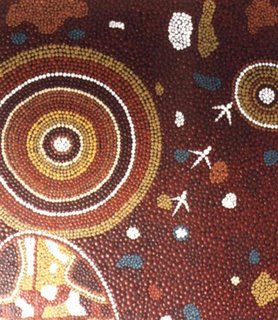
We can group together many physical patterns under one unified pattern referred to in permaculture as the “general model.” This model resembles a tree and can differentiate into waves, streamlines, spirals, cloud forms, toroids, branches, scatters and nets. When a two-dimensional representation of the model is tessellated, or put together to make a grid, it can reveal many other patterns.

Tesselation:

Also revealed in the general model is the Overbeck jet – a pattern that is ubiquitous in nature.

Overbeck jet evident in an embryo and placenta:

If a flow is interrupted by an object in it’s path, alternating Overbeck jets appear creating a Von Karman trail. As a flag flaps in the wind, it is mapping out the Von Karman trail created by the flagpole.
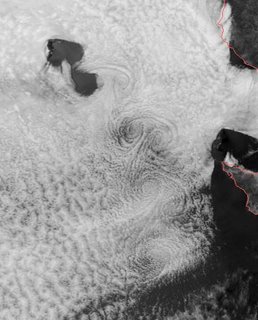

Similar to Von Karman trails are Ekman spirals, which have a significant effect on weather. They occur when wind encounters an obstacle such as trees along an edge. The wind is thrust up but cannot oscillate to create Von Karman trails. Instead, spiralling waves are created. The upward flow of air can reach 20 to 40 times the height of the trees compressing the air. This can create rain bands under the right conditions.

Patterns in flow over time are regulated by “pulsers.” Pulsers control growth – prescribing when a function is to begin and end. The Belousov-Zhabotinsky reaction, which creates a non-linear chemical oscillator, is an example. In it, the Overbeck jet often occurs.
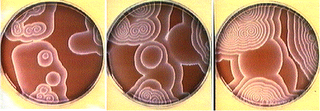
Pulses in the human body control heart beat, peristalsis, circadian rhythms, menstruation, etc. Pulses out of balance are evident in fibrillation, seizure, etc.
In a system, elements have their own order. Order defines relative size and placement of elements in a system. Our bodies’ organs demonstrate order. Consider the lungs. They start with trachea which branch into the primary bronchi to the secondary then tertiary bronchi to bronchioles to terminal bronchiole to respiratory bronchiole to alveolus. It is the same with the spleen, liver, kidneys, etc. Everything has its place in the order, and the system will function poorly with elements out of their order. Catchment dams are beneficial to the environment; large valley dams are destructive. In systems containing different orders, certain species will fit in a certain order; others will not. Rainbow Darters (Etheostoma caeruleum) do just fine in a fast stream – not so well in a pond. Landscape comes in orders. Headwaters have rough, rocky soils with shrubs and hardy vegetation. Estuaries have deep sand and sediment and have a richer variety of life.
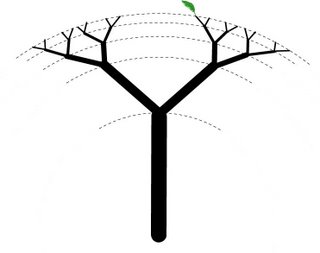
Knowing flow effects like Von Karman trails, Ekman spirals and Overbeck jets not only inspire design ideas, they offer us a way to manipulate flow with minimal effort.
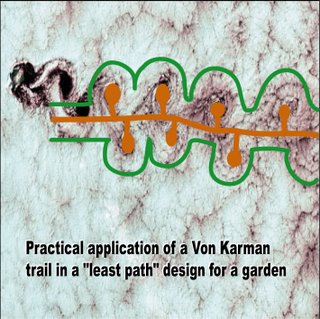
The following flowforms are used to oxygenate water:

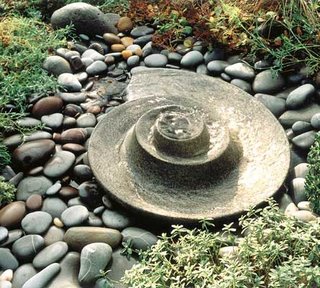
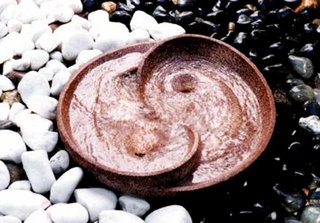
10 comments:
Nice collection!
I've been looking for a lot of things like this myself recently!
one correction though...it's the Anasazi, not the Anastasi...
FYI...
Also...
"Catchment dams are beneficial to the environment; large valley dams are destructive."
You might want to support more clearly why large valley dams are destructive in context to patterns...
As I understand it...it's a matter of scale, and balance...when something gets to big...it's out of balance, and thus destructive, like a tree branch that gets too big for it's support system...it will break, fall and destroy something down below. Large valley dams are too big, increasing the surface area of the water and therefore increase the evaporation of the water, and increasing the siltation of the dam...not to mention the massive surface area of habitat they take out of balanced production (okay...so aquacultures are supposed to be more productive per cubic meter...but we have to consider the lifetime of the system and dams silt up and thus eventually must be decommissioned...end of system)
Or...something to that effect.
Thanks. I'll go after the typo now. I'll mention the dams bit when time presents itself.
Hello Scott and DJEB,
I'm looking to find a strategy for an extremely rocky terrain in the Laurentians northwest of Montreal. It's partially a low-lying area (boggy, pools of water, poor soil - liitle chance for trees to put down deep roots) and partially a southward slope (more deciduous trees, still many conifers). I'm thinking of excavating one or more fish ponds (seasonal, perhaps) and integrating a heat re-circulation system with a dwelling, greenhouse or other heat sink. Any advice appreciated. It's rated zone 3b.
George
sustain_ability@gawab.com
George,
First off, sorry for the slow reply. I was off the computer over the weekend and implementing a design yesterday.
From your posted comment, it sounds like you are half way there - you know your conditions and your USDA zone. I'm guessing it's Precambrian shield where you are, so it will be very rocky with sandy soils. The sandy soils are going to affect your ability to do earthworks, but it is possible.
Under normal situations, swales (water harvesting ditches dug on contour lines) are the cheapest water conservation strategy going. In your situation, however, they might not be worth the bother. First, digging in glacial dumps (rocks and sand) is not the easiest thing to do. Second, the soil (I assume) is sand, so it already absorbs water just fine as it is. Any problems with sheeting water during rainfalls can be met with gabions (rock dams in wire cages for catching sediment).
For building dams or ponds, the sand will just suck away any and all water falling in it unless it is dug into the water table. The get around this, you could use commercial liners, cement, or, for a more sustainable approach, glay. Glay is a layer of anaerobically decaying material acting as a seal for the dam or pond. cover the bottom and sides with a healthy layer of organic material (make sure there's enough nitrogen - aim for about 1 part nitrogen to 25 to 30 parts carbon). Cover that layer with sheets of cardboard weighed down with rocks. I would then throw a layer of sand over that and flood it. If it decays properly, it will form a slippery layer that will retain water. I have seen this occur naturally in environments such as yours with fallen leaves. For best results, though, I would add an insanely thick layer of organic material for the glay.
With a dam in place, you can then look into micro hydro for power generation. There are a lot of companies in Canada that can help you out in this department.
For soil building, just keep piling on the organic material. Garden sheet mulches can be very thick, if you wish (40 cm or more) but when mulching trees, keep it down to 10cm or you risk choking off the trees. If you get trees planted, they will find a way to hold on, even in the rocky Precambrian shield.
Heat. This is a vital strategy, especially in your location. You are south facing, which is good. If you don't yet have a building yet, build a passive solar home. Get Daniel D. Chiras' book The Solar House. For the fenestration, a good rule of thumb is match the percentage of south-facing window space to your latitude. In your case, you are likely around the 45th parallel, so make your south wall 45% windows. There are a number of strategies for heat sinks, slabs, internal brick walls, trombe walls, thermal syphons (which as not so common). The Chiras book will help in this respect.
Think of all the ways to gain heat. If you have a drier, don't just let it's heat vent off outside. In the very least, get a heat exchanger for it. Better still, vent it into a greenhouse. For your heat source when you can't rely on the sun, go with a masonry stove. They perform brilliantly.
Greenhouses can be attached to homes to help heat the house as well. For unattached greenhouses, do not build the east, north or west facing walls out of glass. Build them out of insulated walls. Do not build the roof out of glass, either. Make the roof pitch to the north. The walls inside should be painted white and there should be insulation in the ground to prevent frost, even if the floor is left dirt. And remember that there is such a thing as a chicken-heated greenhouse.
I hope this helps towards finding some strategies. If you have any questions, please let me know.
Douglas Barnes
http://permaculturetokyo.blogspot.com/
DJEB, I couldn't agree more. All of your suggestions were great...I kept saying..."agh...beat me to the punch...agh...he did it again!...agh!..."
Glaying is going to be important for any ponds you're going to build. Just an added suggestion to various earthworks that you might consider...
in order to make those ponds as productive as possible you might want to look into incorporating a "chinampa" system to help you maximize productive edge and biomass of your property.
Chinampa (sometimes spelled chanampa) is originally an aztec word refering to an agricultural practice in ancient Mesoamerica. They were originally floating rectangular areas of land, or floating islands attached to banks of lakes, streams or rivers. Biomass was continually added to the top in the form of leaf litter, compost, manure, etc...and eventually the root structures developed down to reach the bottom of the lake or stream.
If you build a pond. You could easily incorporate a few fingers of land a meter or two wide that you can trellis together for vine crops, gate ends off for aquaculture purposes, etc. etc...
For more information on chinampas you can look here...
http://www.western.edu/faculty/pcrossley/chinampasofmexico/virtualfieldtrips/chinampazoneofxochi/9.htm
http://www.answers.com/topic/chinampa-1
Your floating islands don't have to be as big as the ones pictured in the sites above...they can be scaled back to a more manageable size to suit your needs or desires. I personally wouldn't go much bigger than 3-5 meters wide with an equivalant width of water in-between ...and whatever length that you feel suits your ponds. They could also be pre-planned into the pond, so that you wouldn't have to go through the trouble of "floating" anything, just design the pond with a few fingers of land jutting out into the main part of the pond. You could even make them at different depths to suit the need of different aquaculture plans and fish...and streamline the ease the harvesting.
The chinampa system is something that has yet to really be taken advantage of in North America, and I see no reason why you couldn't (take advantage of it).
I also must add another cheer for attached greenhouses for your dwelling. I've seen that they are starting to get into these in even Alaska as a source for supplementary heating. It also gives you a place to grow some veggies for use throught the winter, while also giving you a place to nurse seedlings along to get a head-start on the planting season in spring. Let's not forget that they also pump your house full of clean oxygen and "minus-eon" rich air.
Good luck, George, I hope these suggestions give you something to work with.
Just a few additional thoughts:
Place your pond south of the house in such a way as to get more light reflecting into the house to aid in solar gain.
With planting strategies around the pond, do not plant things that are going to send root down that could penetrate the gley. This would break the seal and drain your pond or dam.
What the heak! I was trying to find out what is the language of nature. And I get this!!!:(
Great post! I'm going to use some of these examples on the land to the west of my house this summer.
I was very lucky to move into a house built way back in 1985 with a lot of these principles the comments here are talking about.
Come visit next time you are in Alaska: http://sites.google.com/site/alaskanecoescapeedu/
Or on facebook: http://www.facebook.com/home.php#!/bioshelter
That's quite a structure, Cindee! Thanks!
Post a Comment